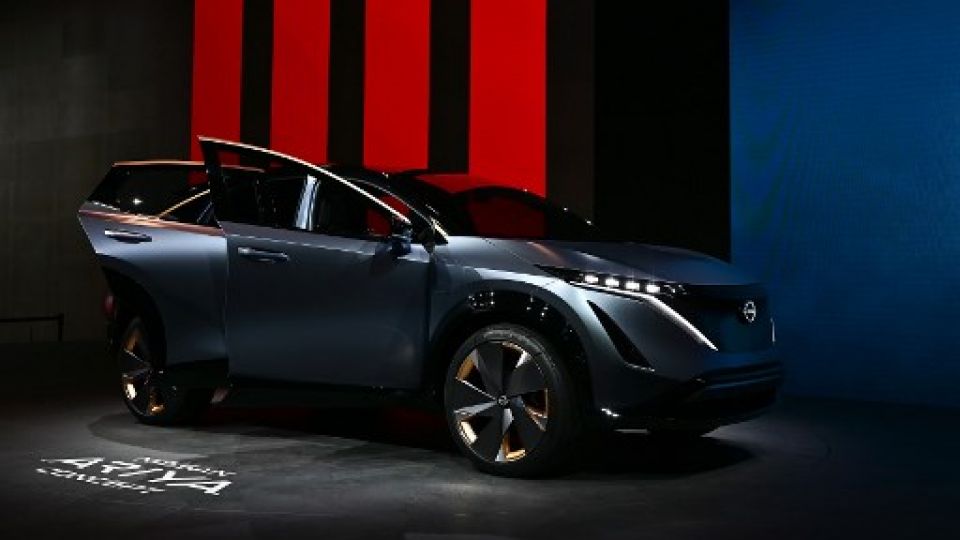November 14, 2019
The company has been on the back foot since its former CEO was accused of mismanagement.
Nissan Motor Co. has reported a massive 85 percent decline in operating profits — an area that indicates the strength or weakness of a company’s main business — in its midterm consolidated financial report for the half fiscal year ending in September.
The pursuit of increased sales has harmed profitability, delaying the development of new Nissan models. That in turn has resulted in fewer sales — a vicious cycle the automaker is struggling to escape from.
Nissan Motor’s deteriorating business performance may affect its three-way partnership with Renault SA, the French automaker that is its largest shareholder, and Mitsubishi Motors Corp.
Failed strategy by Ghosn
Nissan Corporate Vice President Stephen Ma, who will become chief financial officer on Dec. 1, emphasized the company’s reform efforts at a press conference held Tuesday about the company’s financial report. Nissan Motor is not seeking the conventional goal of market share and sales numbers, Ma said, but is trying to improve the quality of its sales.
However, these efforts are not bearing sufficient fruit. Nissan’s sluggish sales are the result of a strategy aimed at drastically increasing sales that was pursued by former Chairman Carlos Ghosn.
Starting in 2013, Nissan opened new factories in countries such as Mexico, Brazil and Indonesia, with the goal of expanding sales in emerging countries. When sales did not rise as expected, the company sought to make up for this by offering excessive discounts in North America, which had been a solid market for Nissan. However, this strategy damaged the carmaker’s brand image.
The sharp drop in profits in the latest financial report was largely due to reduced incentives given to dealers to fund the discounted sales. Nissan sold 6.9 percent fewer units in the North American region, which makes up for one-third of its sales.
New models delayed
In North America, the length of time until a new model is introduced, which had been slightly less than four years, ballooned for a time to about five years.
With the exception of minicars, Nissan has not released a new model in Japan for more than two years since it rolled out its revamped Leaf electric car in 2017.
The company has just launched a restructuring plan to go back on the offensive.
In July, it announced that 14 production bases around the world would be halted and its workforce would be cut by about 12,500 people. The company expects operating profits to improve to ¥300 billion in total by cutting labor and other fixed costs and reducing sales costs.
It also plans to reduce the time until new models are released to 2½ to three years by rolling out at least 20 models around the world by fiscal 2022. This effort is to be focused on EVs.
Competition heating up
Yet for all these efforts, Nissan is facing an increasingly severe business environment.
The automobile industry is striving to develop next-generation vehicles with connected, autonomous, shared and electric technologies.
With automakers in urgent need of funding for the future, Nissan’s ratio of operating profits to net sales, which reflects the company’s ability to earn, stands at only 0.6 percent. This is compared to 9.2 percent for Toyota Motor Corp. and 6.1 percent for Honda Motor Co.
The question of integration
Nissan partners Renault and Mitsubishi have both experienced deteriorating business performance, which has put the tripartite alliance in trouble.
Renault is Nissan’s largest shareholder, and may seek to deepen the alliance in an attempt to get more out of it.
Renault has a 43.4 percent stake in Nissan, and dividends and other earnings from Nissan stock support Renault’s profits. Thus when Nissan’s business deteriorates, it further hurts Renault.
The man holding the key to the alliance is Jean-Dominique Senard, Ghosn’s successor as chairman of Renault.
In April, Senard approached Nissan out of the blue about a business integration. He believed a merger would accelerate decision-making and strengthen the management base.
When Nissan refused, Senard looked to merge with Fiat Chrysler Automobiles NV, a major U.S. and European automaker.
This effort did not pan out due to Senard’s failure to win Nissan’s approval and other factors. FCA later chose to merge with Groupe PSA, the French auto giant formerly known as PSA Peugeot Citroen.
Parties related to Nissan are wary that Senard, who lowered Renault’s business performance and was unable to conclude the merger with FCA, will again bring up integration with Nissan in an effort to “regain territory.”Speech



